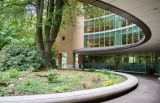A new brain scanning study of jazz pianists reveals that the workings of neural circuits associated with creativity change when artists are trying to convey emotions, Financial Express reports.
The findings were published in the journal Scientific Reports.
Researchers at the University of California in San Francisco, who conducted the study, said that when creative acts engage brain areas involved in emotional expression, activity in these brain areas decides which parts of the brain's creativity network are activated and to what extent.
Most of the new research was conducted in Limb's laboratory at Johns Hopkins School of Medicine before he moved to UC San Francisco in 2015, according to Science daily.
In the new study, researchers found that DLPFC deactivation was greater when the jazz musicians improvised melodies to convey the emotion expressed in a 'positive' image than when they conveyed the emotions in a 'negative' image.
The dorsolateral prefrontal cortex (DLPFC) is a brain region involved in planning and monitoring behaviour.
"The bottom line is that emotion matters," said Charles Limb from the University of California.
"It cannot just be a binary situation in which your brain is one way when you are being creative and another way when you're not. Instead, there are greater and lesser degrees of creative states, and different versions. And emotion plays a crucially important role in these differences," he added.
The musical improvisations made by the musicians at expressing the emotion in the negative image were associated with greater activation of the brain's reward regions which lead to pleasurable outcomes and a greater connectivity of these regions to the DLPFC.
"There is more deactivation of the DLPFC during happy improvisations, perhaps indicating that people are getting into more of a 'groove' or 'zone,' but during sad improvisations there's more recruitment of areas of the brain related to reward," said Malinda McPherson, a classical violist who led the study.
© 2025 University Herald, All rights reserved. Do not reproduce without permission.








